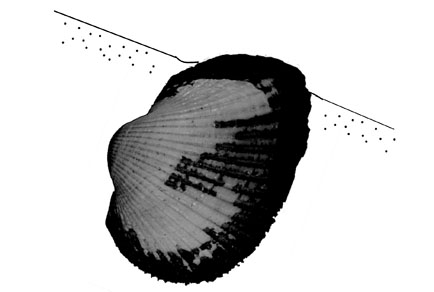Abstract
In this study, we investigated the response of five infaunal bivalve species to changes in their life positions (life orientations) by tilting the aquariums in which they were placed. The results show that the bivalves returned their orientations to normal when they were inclined ventrally or dorsally, but not when they were inclined to the left or right side. The conditions were not changed in any other respect except for tilting the aquarium. The only difference in conditions of all the aquaria was the degree of inclination. That the animals readjusted to their normal position in such circumstances indicates that they control their orien-tation, presumably in response to gravity. The different responses to dorsal-ventral right-left tilting may be due to their style of movement which is in turn related to their shell, musculature and external body form. This and previous studies indicate that antero-posterior life orientations of bivalves have functional or ecological significance. It is proposed that bivalve antero-poste-rior orientation can be interpreted to be intermediate between the burrowing orientation and the orientation with the siphons extended upright most efficiently.

